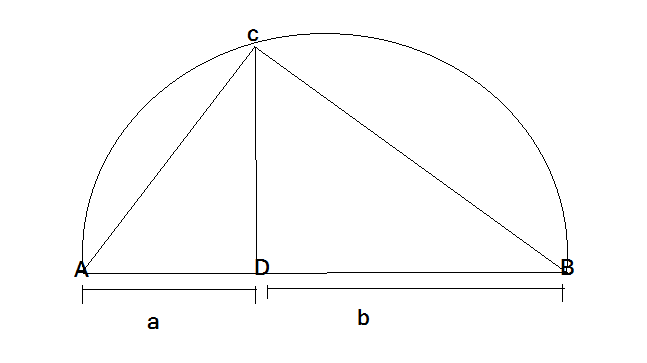A wonderful Proof of inequality

Lets us consider a semicircle with diameter AB. If C is any point on the semicircle, then ABC forms a right angled triangle with right angle at C .
Let CD be the perpendicular to AB dropped from C . Let AD= a and DB=b
The trianges DAC and DCB are similar , hence
therefore
and thus
if r is the radius of the semicircle , then
we know
Thus
If that is if the Point D comes on the center of the circle then
Please reshare if you liked it
No vote yet
1 vote
Easy Math Editor
This discussion board is a place to discuss our Daily Challenges and the math and science related to those challenges. Explanations are more than just a solution — they should explain the steps and thinking strategies that you used to obtain the solution. Comments should further the discussion of math and science.
When posting on Brilliant:
*italics*or_italics_**bold**or__bold__paragraph 1
paragraph 2
[example link](https://brilliant.org)> This is a quote# I indented these lines # 4 spaces, and now they show # up as a code block. print "hello world"\(...\)or\[...\]to ensure proper formatting.2 \times 32^{34}a_{i-1}\frac{2}{3}\sqrt{2}\sum_{i=1}^3\sin \theta\boxed{123}Comments
Geometry proves AM-GM. That's the beauty of mathematics. Reshared!
Great @megh choksi Keep it up bro
Log in to reply
How to mention someone on brilliant?
Log in to reply
Just write @Name which You want to post
Geometry can also prove RMS, AM, GM, HM too. Look at here.
the only condition when DC = r will be when D is the centre of circle. And taking D as the centre of circle will it self make AD = a = radius = b = DB, why do we even need such a long calculation?